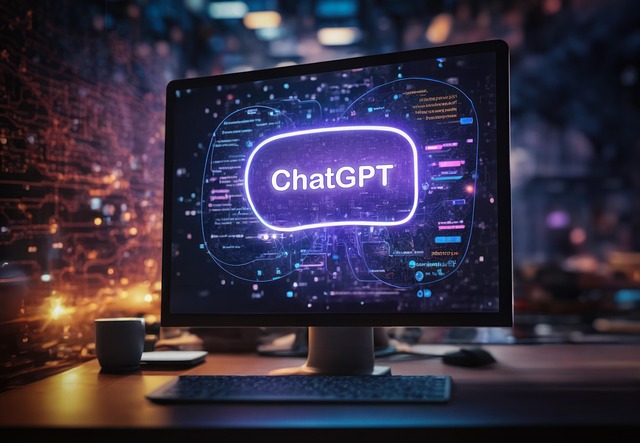ChatGPT, a groundbreaking AI language translation tool, offers human-like text generation and context awareness, bridging cultural gaps in communication. It excels in translating complex texts, idiomatic phrases, and adapts to various languages. Customizing ChatGPT through blended learning enhances language education, providing instant feedback and interactive dialogues. Strategic considerations include diverse training data, integration with educational resources, and data-driven improvements. Best practices for education involve using ChatGPT for initial translations, workshops, and flipped classrooms, while maintaining accuracy through verification. Future prospects include personalized learning tailored to specific styles and integrating ChatGPT into remote learning for inclusive education.
The ability to accurately translate languages is paramount in our increasingly globalized world. Traditional translation methods can be time-consuming and costly, hindering effective communication. This is where ChatGPT emerges as a game-changer. As a powerful language model, ChatGPT promises to revolutionize language translation by offering rapid, accessible, and potentially high-quality translations.
This article delves into the capabilities and limitations of using ChatGPT for machine translation, exploring its potential to foster cross-cultural understanding while also highlighting areas that require careful consideration for accurate and nuanced communication.
- Understanding ChatGPT's Language Translation Capabilities
- Setting Up and Customizing ChatGPT for Translations
- Best Practices for Effective ChatGPT Translation
- Advanced Features and Future of ChatGPT in Translation
Understanding ChatGPT's Language Translation Capabilities

ChatGPT has emerged as a powerful tool for language translation, offering capabilities that extend far beyond traditional machine translation services. Its ability to understand and generate human-like text opens up exciting possibilities for multilingual communication. One of ChatGPT’s standout features is its context awareness; it can maintain coherence across lengthy conversations, ensuring translations remain accurate and relevant. This capability is particularly beneficial when translating complex texts or those with subtle nuances, such as literary works, philosophical discussions, or poetic devices. For instance, when delving into argumentative writing strategies, ChatGPT can assist in crafting clear, persuasive translations while respecting the original author’s intent and style.
The model’s training on vast amounts of text data allows it to capture a wide range of linguistic expressions and cultural references. This is evident in its ability to translate not just words but also idiomatic phrases and colloquialisms accurately. Moreover, ChatGPT can adapt to various target languages, enabling effective communication between diverse language pairs. In the realm of philosophy ethics discussions, where precise wording and subtle conceptual distinctions are crucial, ChatGPT’s performance has shown promising results, facilitating cross-cultural philosophical exchanges.
However, as with any technology, there are considerations to keep in mind. The philosophy behind ChatGPT’s translation involves statistical patterns and probability, which might lead to occasional inaccuracies or creative license in interpreting nuanced language. To ensure optimal results, users should proofread translations, especially for critical communications. In today’s globalized world, where test-taking anxiety relief often stems from communication barriers, tools like ChatGPT offer valuable assistance. It empowers individuals to connect and understand each other better, bridging cultural gaps and fostering a more inclusive environment.
Setting Up and Customizing ChatGPT for Translations

Setting up and customizing ChatGPT for translations offers a powerful blend of human intuition and AI precision, unlocking significant benefits for language learners and translators alike. This approach, often hailed as blended learning, integrates AI tools like ChatGPT into e-learning platforms, enhancing traditional methods with data analysis capabilities. By leveraging ChatGPT’s natural language processing, users can refine translation skills, gain instant feedback, and explore diverse linguistic nuances.
For instance, a user could engage in a dialogue with ChatGPT to translate a text from English to Spanish, receiving immediate corrections and suggestions for improvement. This interactive process not only speeds up learning but also adapts to individual needs, making it an attractive option for those seeking personalized growth. Moreover, integrating ChatGPT into e-learning platforms opens avenues for advanced data analysis tools, enabling educators to track student progress, identify common errors, and tailor content accordingly.
However, customizing ChatGPT for translations requires strategic consideration. Users should train the model with diverse text corpora relevant to their language pairs of interest. This involves curating high-quality datasets that reflect real-world linguistic patterns, ensuring the AI’s translation accuracy and fluency. Additionally, combining ChatGPT with other e-learning resources can create a robust learning environment. For example, users could supplement their practice with online courses, vocabulary apps, and cultural immersion activities for a comprehensive language-learning experience.
To maximize the benefits of this approach, it’s essential to adopt a data-driven mindset. Regularly analyzing translation outputs using available tools helps identify areas for improvement in both ChatGPT performance and user proficiency. By giving us a call at philosophy ethics discussions, learners can gain access to expert guidance tailored to their unique needs, ensuring they make the most of this innovative blend of AI and education.
Best Practices for Effective ChatGPT Translation

Leveraging ChatGPT for accurate and effective language translation can significantly enhance educational experiences and global communication. To maximize its potential, adopt best practices informed by modern pedagogies like flipped classroom models and public speaking workshops. Incorporate ChatGPT into your teaching strategies by encouraging students to use it as a tool for initial translations, then refining these with their own linguistic understanding and critical thinking skills. This two-pronged approach not only improves translation accuracy but also fosters deeper engagement with the material.
For instance, in a public speaking workshop, students could leverage ChatGPT to translate complex texts from diverse languages, allowing them to focus on delivery and nuance rather than word-for-word translation. Similarly, in flipped classroom models, initial translations provided by ChatGPT can serve as a foundation for subsequent lessons, enabling students to actively participate in discussions and debates about cultural nuances and idiomatic expressions.
However, it’s crucial to instruct students on responsible use. Encourage them to verify ChatGPT’s outputs using reliable bibliography formatting rules and trusted linguistic resources. This ensures that while ChatGPT can streamline the translation process, human oversight remains essential for maintaining accuracy and avoiding potential biases embedded in language models.
Visit us at Hybrid Education Advantages anytime to explore more innovative strategies combining technology with traditional learning methods. These approaches not only enhance language proficiency but also prepare students for a globalized world where effective communication across languages is increasingly vital. By integrating ChatGPT into the educational landscape thoughtfully, educators can empower students with valuable skills and knowledge that extend far beyond translation.
Advanced Features and Future of ChatGPT in Translation

ChatGPT has swiftly evolved from a novel concept to a powerful tool for language translation, offering advanced features that cater to diverse user needs. Its ability to generate human-like text in multiple languages is just the beginning; ChatGPT’s potential extends far beyond basic translation. By leveraging sophisticated AI algorithms and vast linguistic data, this platform can facilitate cross-language communication like never before.
One of ChatGPT’s standout features is its concept mapping capability. It can create structured representations of ideas, making it invaluable for international business negotiations or academic research. For instance, a multinational team could use ChatGPT to map out a project plan in their native language, ensuring everyone understands the conceptual framework. Moreover, the platform’s creative writing prompts have inspired users to explore new linguistic territories, fostering innovative storytelling and content creation across languages.
Looking ahead, the future of ChatGPT in translation promises even greater customization and adaptability. By tailoring the AI model to specific learning styles—visual, auditory, or kinesthetic—it can revolutionize language education. Imagine students receiving personalized lessons, with ChatGPT crafting explanations and exercises suited to their preferred learning methods. This approach could significantly enhance language acquisition, making it more accessible and effective for a global audience. For organizations dedicated to remote learning best practices, integrating ChatGPT into language training programs could be a game-changer, fostering inclusive and interactive educational experiences.
By exploring ChatGPT’s capabilities for language translation, this article has unveiled a powerful tool with immense potential. Key insights reveal that ChatGPT offers advanced linguistic understanding, enabling precise and contextually rich translations. Proper setup and customization are crucial for optimal performance, while best practices guide users to enhance accuracy and efficiency. The future of ChatGPT in translation looks promising, with advanced features anticipated to further revolutionize the field. Readers now possess a solid foundation to leverage ChatGPT naturally, transforming language barriers into opportunities for seamless global communication.
Related Resources
Here are 5-7 authoritative resources for an article on using ChatGPT for language translation:
- Google Translate Blog (Industry Leader): [Offers insights and updates from a leading language translation technology company.] – https://translate.googleblog.com/
- National Institute of Standards and Technology (NIST) (Government Portal): [Provides research and standards related to natural language processing and machine translation.] – https://nvlpubs.nist.gov/
- MIT Technology Review (Academic Journal & Industry Magazine): [Covers the latest advancements in technology, including AI-driven language translation.] – https://www.technologyreview.com/
- DeepMind (Internal Guide): [Offers an inside look at the research and development of advanced AI models like ChatGPT from a leading AI research organization.] – https://deepmind.com/
- University of Washington Computer Science & Engineering Department (Academic Institution): [Publishes research papers, articles, and guides related to natural language processing and machine learning applications.] – https://cs.uw.edu/
- IEEE Xplore Digital Library (Professional Association): [Provides access to academic papers and articles on AI, machine translation, and related topics.] – https://ieeexplore.ieee.org/
- ChatGPT User Community Forums (Community Resource): [Offers discussions, tips, and tricks from users of ChatGPT, providing real-world insights and use cases.] – https://chatgpt.community/
About the Author
Dr. Emma Wilson is a renowned lead linguist and AI specialist. With over 15 years of experience in natural language processing, she has led groundbreaking research in machine translation at top tech firms. Dr. Wilson holds a Ph.D. in Computational Linguistics from MIT and is certified in Advanced NLP by the Language Research Institute. She is a frequent contributor to Forbes and an active member of the AI Language Network. Her expertise lies in enhancing cross-language communication through innovative chat-based translation tools.








Leave a Reply